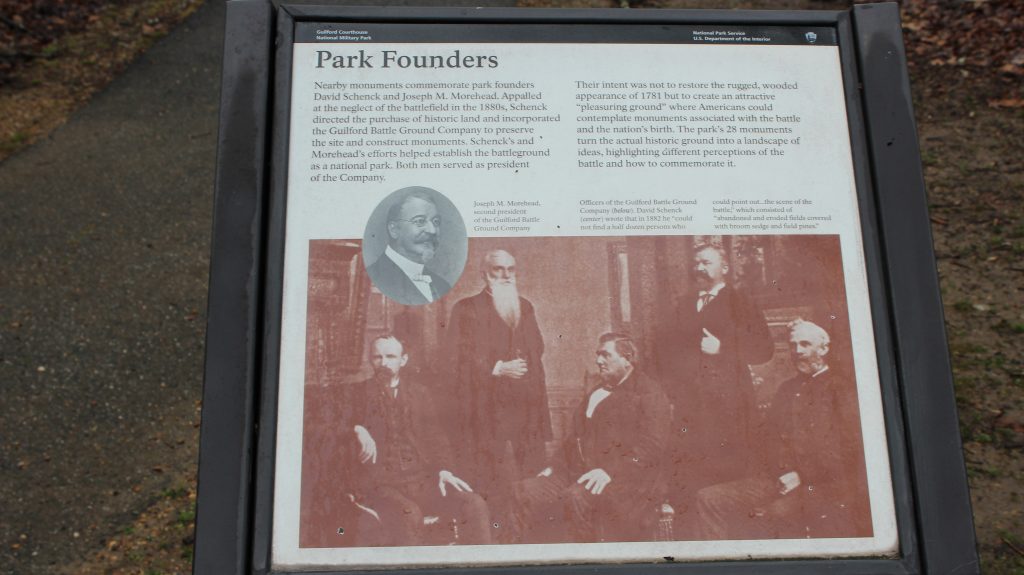Sacred Ground Abandoned
Shortly After the Battle of Guilford Courthouse, residents fled the surrounding area, due to the death, decay, and damaged land. In 1785, the North Carolina assembly chartered a new town, Martinsville, which laid where the old courthouse stood. The new residents cleared the forests surrounding the battlefield, nearly 1,000 acres, for subsistence farming and it seemed that the battle had been forgotten. As the decades slowly turned, Martinsville declined, leaving the farmland where the battle occurred in ragged disrepair. As the nearby city of Greensboro grew into the old borders of Martinsville, the battlefield seemingly sifted into the patchwork of farms and homesteads.
To some residents of Greensboro and the surrounding area, the Battle of Guilford Courthouse had not been forgotten. In 1857, a committee of private citizens known as the Greene Monument Association sought to erect a bronze monument of American General Nathaniel Greene on battlefield land owned by the city; however, the committee’s efforts were interrupted by the outbreak of the American Civil War.
https://www.ncpedia.org/history/usrevolution/guilford-courthouse
https://www.nps.gov/parkhistory/online_books/guco/adhi/adhi1.htm
Reconstruction and Construction
Over the course of the American Civil War, much of the American South was left in ruin including the upper Piedmont and Guilford County. As a result of the Confederacy’s defeat, land was redistributed, including much of the land in Greensboro, where the Battle of Guilford Courthouse occurred, leaving the land where the battleground took place in disparate hands. In 1876, the centennial of the Declaration of Independence, the period after the Civil War, known as Reconstruction, came to a close. The celebration of the centennial morphed into an opportunity to ideologically bond North and South under the rhetoric of American victory in the American Revolution citing it as a “common heritage.”
The American Congress appropriated a quarter-million dollars toward the establishment of Revolutionary War monuments across the East-Coast in commemoration of the Revolution. The resurgence in American nationalism did not stop with the celebration of the Centennial, the monuments took time and required the monetary support of not just Congress but also the support of the American public, which was readily available.
https://www.nps.gov/parkhistory/online_books/guco/adhi/adhi1.htm
From Confederates to Founders

When the Southern states seceded from the American Union, men of prominence within their community rose to either military or governmental status within the Confederacy. After the war, many of the men within the Confederacy retained their status and their wealth. David Schenck served as a Confederate fundraiser and solicitor during the war and is the primary founder of the Guilford Courthouse Military Park, the other founder being former Confederate Officer Joseph M. Morehead.
“Out of a population of 3000 people in Greensboro I could not find a half dozen persons who could point out to me the scene of the battle.”
David Schenck
Both Schenck and Morehead, founded the Guilford Battleground Company, in the 1880s, in order to buy back the land where the battle took place. Throughout the latter half of the 19th century, the company gained traction and constructed a massive monument in commemerrance of General Nathanael Greene at the center of the Battlefield. Eventually, the company turned over the land to the federal government, who turned the battleground into a national military park, which is open to the public to this day.
https://finding-aids.lib.unc.edu/00523/ https://www.nps.gov/parkhistory/online_books/guco/adhi/adhi1.htmnull